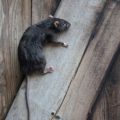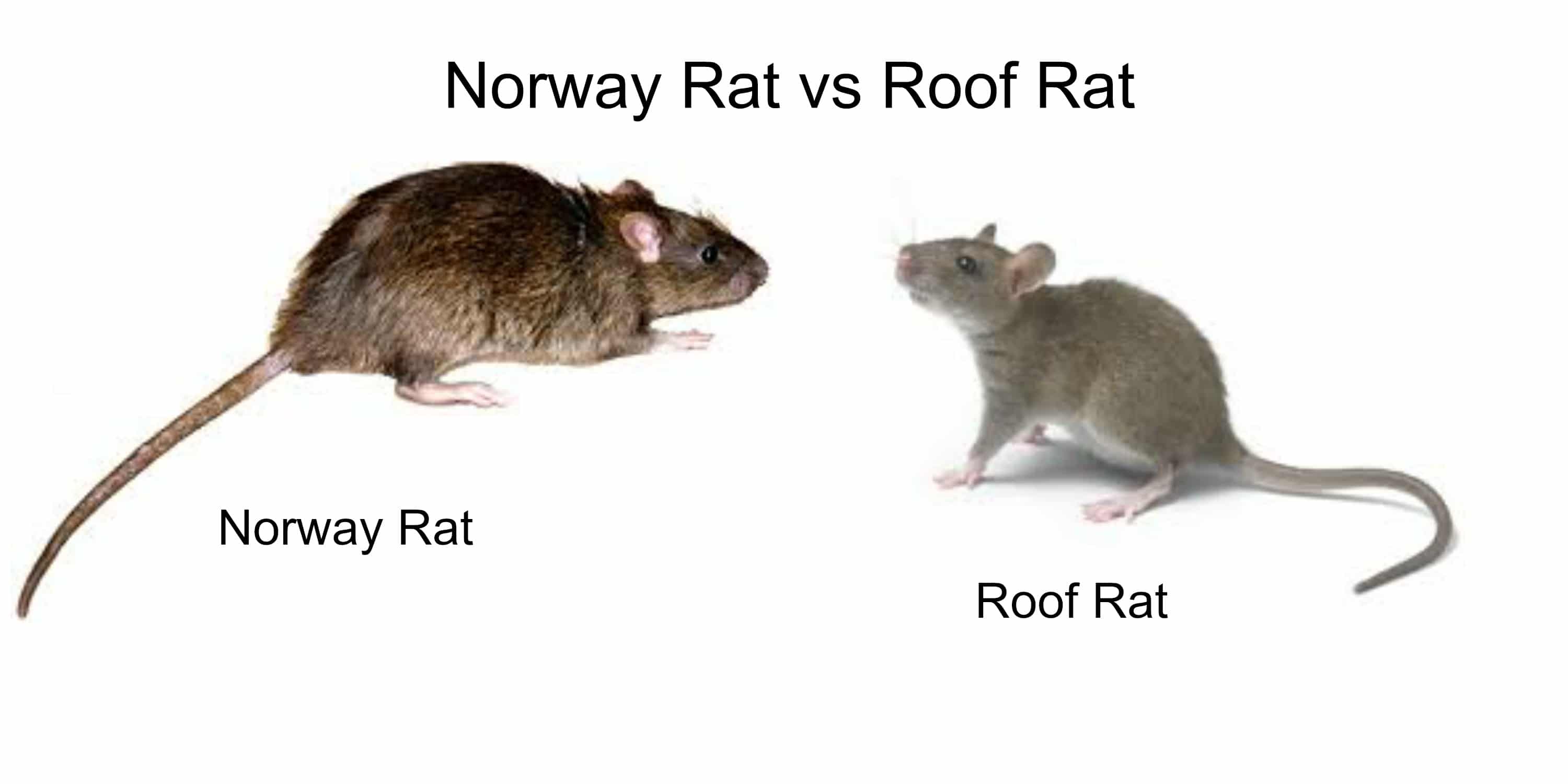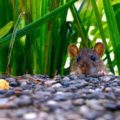Table of Contents
Norway rats typically don’t climb trees due to the rats’ larger size and slower climbing abilities, but will if they are motivated enough. They may be slow, but Norway rats can use their front and back claws to climb a tree trunk to the same heights as a Roof rat, as well as use their long tail to balance while on branches.
Roof rats, on the other hand, love to climb trees. Roof rats are known for being able to climb any surface that has a texture to it. Palm tree rats are simply roof rats that have climbed into palm trees. Their little claws can dig into a surface and stabilize their body weight regardless of whether they’re scaling up tree bark or a brick wall. They’re also able to reach around and shimmy while climbing up metal pipes and poles. Climbing up a tree is easy for Roof rats.
Here is a short little video showing just how fast a rat can zip up a tree…even while holding a peanut 🙂
How high can a rat climb?
The University of Nebraska released a guide called “Rodent-Proof Construction: Drains and Feeding Equipment.” It reveals that rats, specifically Norway rats, and mice, can climb and fall up to 50 feet and survive without being incapacitated. However, rats can climb as high as a building if they can hold on long enough or find a way. If something is within their reach, they will climb it.
Why do rats climb trees?
Transportation
Roof rats primarily use trees as a means to travel from place to place. They use trees and shrubbery as a gateway to climb and jump onto rooftops, walls, fences, windows, and anywhere else they can explore their way into.
Home and nest
Roof rats are known to live and build their nests amongst the hidden security of trees. The thicker the amount of leaf and branch coverage, the better. In some instances, Roof rats can be found living in tree orchards at the base of a tree.
Access to food
Both the Norway rat and the Roof rat will eat just about anything a human will eat and more. Rats of both types are nocturnal but have been known to scavenge for food during the day. These rats are brave and will use their strong sense of smell to find fruit and citrus trees, garbage bins, bags, and anything left out. Rats are so brave that they will eat from a dog or cat food bowl.
Roof rats love to climb fruit, citrus, and avocado trees. They’re especially known for climbing branches, locating fruit, and leaving holes in them. They’re also famous for chewing a hole into the inside of an orange or avocado and eating the good parts. They don’t seem to like the taste of lemons and tend to just eat the outside rind.
Safety
Think about it, the higher a Roof rat is, the harder it is to reach them. These little pests are smart; they build their nests up high so that they, their pups, or a stash of food, will be hidden away from predators. Scurrying up a tree isn’t a bad idea for the Roof rat or even the Norway rat. This is especially true when there are larger predators like cats, dogs, wildcats, and even snakes waiting around.
How can I tell if a rat can climb my tree?
All of the following observations can show whether or not your tree can be or has already been climbed on and taken over by a rat.
- Your tree trunks don’t have a metal covering over them to prevent rats from reaching, jumping, and climbing onto the bark
- You have low-hanging fruit and branches. Pick off ripe fruit and cut back the branches and leaves
- You have decorative or seasonal outdoor lights that are wrapped around the base of the tree or you have them going across an area in your yard that’s close to a tree or bush
- Your branches and leaves are overgrown and are very close to the house, farm, or other objects and buildings
- Your home has ivy or sprawling vines on a wall or fence and that is close to a tree
- Your fruit trees have ripe fruit that’s been half-eaten, bitten into, hollowed out, or fallen to the ground with the above issues
- You have a crop, hay, or animal feed that will attract Roof rats and Norway rats
- You hear squeaks and fighting in a tree. This is most likely where their nest is
- Your home is very close to a wall, fence, gate, or anything a rat can use to climb a tree
- You see a rat or rats climbing up or down, as well as jumping to or from a tree
How can I stop rats from climbing into my tree?
- You can buy a metal rat guard for the trunk of your trees
- You’ll need to get rid of any object that is laying against a wall that’s located near your trees or bushes
- You need to trim your trees, bushes, ivy, crops, and anything else they’ll want to climb up, hide in, eat, or chew up
- You’ll want to purchase protective rat stoppers for any metal poles or pipes. This goes for rain gutters and animal kennel fencing near your house, barn, wall, or tree
- You may want to modify or completely change the type or location of the plants, trees, and crops you have
- You’ll want to hire someone to find and seal up any rat holes leading them to and from trees. This includes holes found at the base of a building or structure
- You are going to want to invest in a new door, garage door, or get a breeze stopper for doors with a gap beneath it
- Research the trapping and poisoning products and services available to catch or kill rats
Conclusion
Rats are known climbers, regardless of their breed. Protect your beautiful landscape, your fruit trees, your livestock, and yourself by preventing and stopping a rat infestation. Make sure to explore your property, home, business, or farm for rat holes and messes. Be proactive in your fight against being taken over by a family or a generation of rats.





